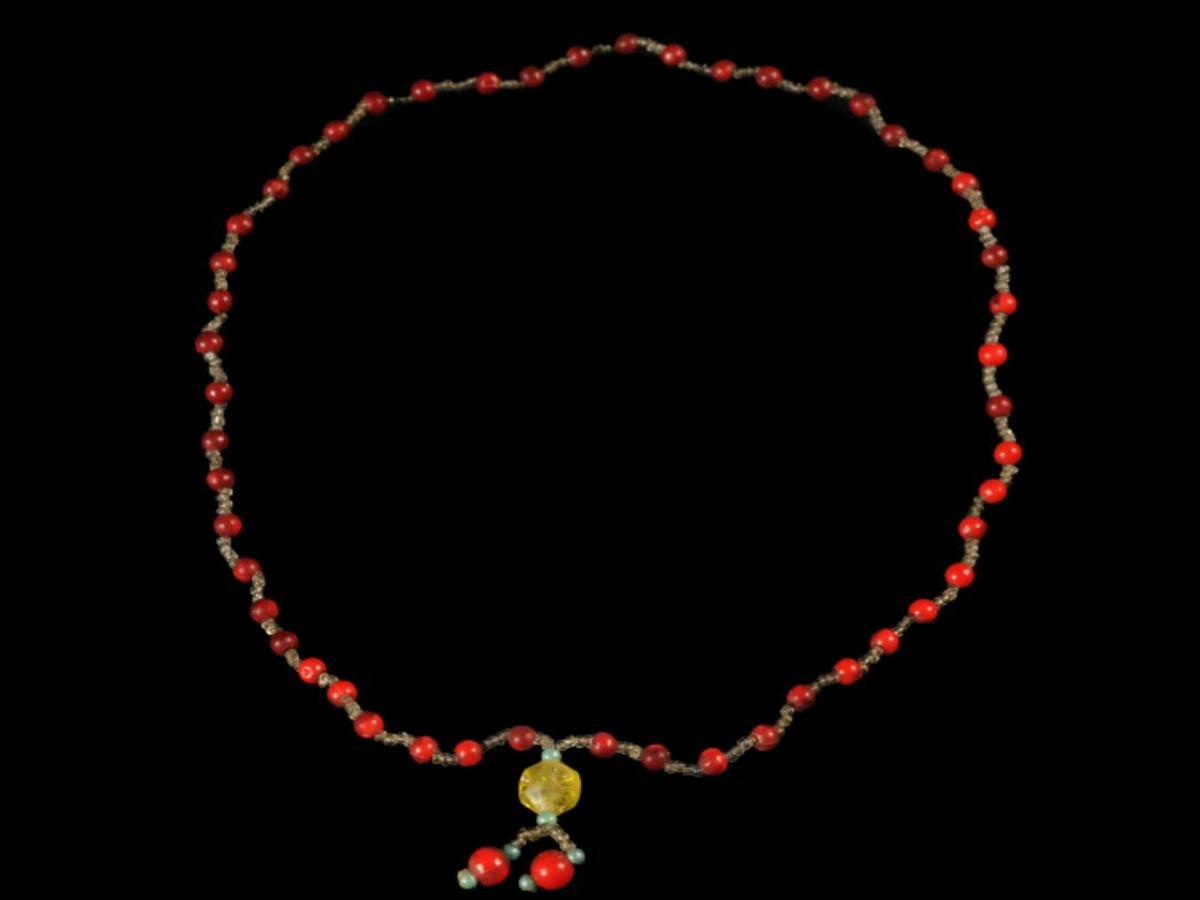State
Tribe Name
Art Type
short description
The Binjhal community, one of the larger tribal groups found in Odissa and Chhattisgarh, makes a resounding mark with their cultural liveliness and vibrancy in their traditional custodian attire and ornamental artistry. Among the different ornaments cherished by the Binjhal people, the Mali stands high, possibly as an emblem of ethnic pride and aesthetic attributions. This ornament, which is worn exclusively by the women during all festive and ceremonial occasions, serves as decorative and symbolic. Uniquely this version of Mali is made of pink plastic beads and white glass beads, an indication of how tradition meets present with modern materials.
Thumbnail

Filter Postion
Left
Filter Background
Off
Theme
Filter Header Image

content
Image

description
The Binjhal community, one of the larger tribal groups found in Odissa and Chhattisgarh, makes a resounding mark with their cultural liveliness and vibrancy in their traditional custodian attire and ornamental artistry. Among the different ornaments cherished by the Binjhal people, the Mali stands high, possibly as an emblem of ethnic pride and aesthetic attributions. This ornament, which is worn exclusively by the women during all festive and ceremonial occasions, serves as decorative and symbolic. Uniquely this version of Mali is made of pink plastic beads and white glass beads, an indication of how tradition meets present with modern materials.
The meticulous arrangement of these beads on a cotton thread reflects the tribe's eye for good color coordination and symmetrical patterns. What makes it further special is a green-colored locket attached at both ends of the beaded strands. This not only acts as a scenic centerpiece but also has personal or spiritual meanings, being regarded as bestowing good fortune or protection to the wearer. The color—which white stands for purity, pink for harmony, and green is associated with life and growth—adds even more meaning to the ornament beyond aesthetics. It is often made by hand in the village, and skills are passed down through generations of Binjhal women, providing identity and continuity in culture. This ornament is typical of how Binjhal harmonizes the ancient aesthetics with contemporary material so that this form of cultural expression persists in a modern world.
The meticulous arrangement of these beads on a cotton thread reflects the tribe's eye for good color coordination and symmetrical patterns. What makes it further special is a green-colored locket attached at both ends of the beaded strands. This not only acts as a scenic centerpiece but also has personal or spiritual meanings, being regarded as bestowing good fortune or protection to the wearer. The color—which white stands for purity, pink for harmony, and green is associated with life and growth—adds even more meaning to the ornament beyond aesthetics. It is often made by hand in the village, and skills are passed down through generations of Binjhal women, providing identity and continuity in culture. This ornament is typical of how Binjhal harmonizes the ancient aesthetics with contemporary material so that this form of cultural expression persists in a modern world.
Image Mode
landscape
promoted
On
Verified
Off
